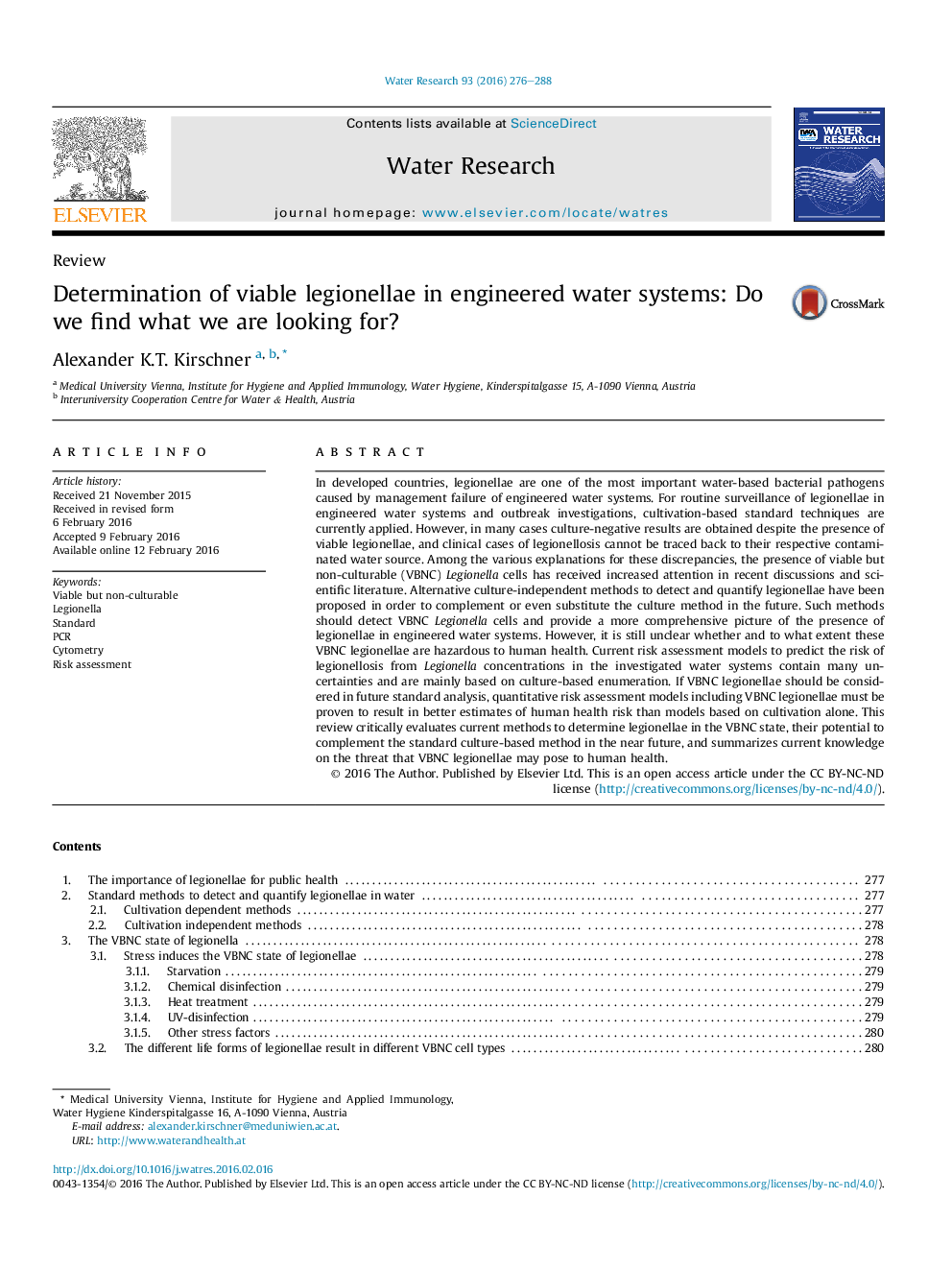| کد مقاله | کد نشریه | سال انتشار | مقاله انگلیسی | نسخه تمام متن |
|---|---|---|---|---|
| 4480928 | 1623075 | 2016 | 13 صفحه PDF | دانلود رایگان |
• First critical review paper on viable but non culturable (VBNC) legionellae.
• VBNC legionellae are of potential public health concern.
• A variety of different VBNC Legionella cell types exist.
• Methods for quantification of viable legionellae are critically discussed.
• Future research needs and methodical tool-box outlined.
In developed countries, legionellae are one of the most important water-based bacterial pathogens caused by management failure of engineered water systems. For routine surveillance of legionellae in engineered water systems and outbreak investigations, cultivation-based standard techniques are currently applied. However, in many cases culture-negative results are obtained despite the presence of viable legionellae, and clinical cases of legionellosis cannot be traced back to their respective contaminated water source. Among the various explanations for these discrepancies, the presence of viable but non-culturable (VBNC) Legionella cells has received increased attention in recent discussions and scientific literature. Alternative culture-independent methods to detect and quantify legionellae have been proposed in order to complement or even substitute the culture method in the future. Such methods should detect VBNC Legionella cells and provide a more comprehensive picture of the presence of legionellae in engineered water systems. However, it is still unclear whether and to what extent these VBNC legionellae are hazardous to human health. Current risk assessment models to predict the risk of legionellosis from Legionella concentrations in the investigated water systems contain many uncertainties and are mainly based on culture-based enumeration. If VBNC legionellae should be considered in future standard analysis, quantitative risk assessment models including VBNC legionellae must be proven to result in better estimates of human health risk than models based on cultivation alone. This review critically evaluates current methods to determine legionellae in the VBNC state, their potential to complement the standard culture-based method in the near future, and summarizes current knowledge on the threat that VBNC legionellae may pose to human health.
Figure optionsDownload high-quality image (220 K)Download as PowerPoint slide
Journal: Water Research - Volume 93, 15 April 2016, Pages 276–288
